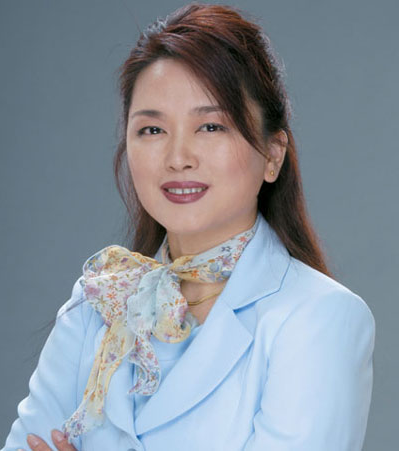(单词翻译:单击)

Asia's women face more barriers than those in the West in penetrating the top ranks of corporate management, contributing to a shortage of talent that threatens to stifle the region's economic growth, according to a report to be released Monday.
管理咨询公司麦肯锡(McKinsey & Co.)7月2日发布的一份报告显示,亚洲女性在进入企业高级管理层的过程中比西方女性面临更多障碍。这导致了人才短缺,从而有可能抑制亚洲地区的经济增长。
The survey of 1,500 senior managers and research of 744 exchange-listed companies across the region by McKinsey & Co., a management consulting firm, suggests that increasing the number of women in high-level positions can improve companies' financial performance and countries' economic expansion. The research伟among the first to look at the mix of women on corporate boards and executive committees across 10 Asia-Pacific markets has implications for the fast-growing region's companies, many of which are struggling to recruit the high-level managers they need to expand.
麦肯锡对亚洲1,500名高级管理人员和744家上市公司进行的调研显示,增加高层职位中的女性人数可以改善公司的财务业绩和推动国家的经济扩张。这是最早对10个亚太市场中女性在公司董事会和执行委员会的任职情况进行调查的研究之一。该研究对迅速增长的亚太地区的公司有一定启示,其中很多公司都在努力招募高层管理人员以拓展业务。
Asian companies with the highest proportion of women on executive committees posted an average return on equity, a closely watched metric among investors and analysts, of 22% between 2007 and 2009, compared with 15% for those with no women on their executive committee, McKinsey's analysis shows.
麦肯锡的分析报告指出,那些执行委员会中女性成员比例最高的公司在2007到2009年间平均股本回报率为22%,而执行委员会中没有女性的公司这一数据仅为15%。股本回报率是投资者和分析师都密切关注的一个衡量标准。
"Women tend to be stronger in terms of collaboration and people development, while men tend to be stronger in individual decision making," says Wang Jin, a Shanghai-based principal at McKinsey who helped author the report. "By having more women at the senior level, companies are helping to improve organizational health as well as financial performance."
报告作者之一、麦肯锡上海分公司董事王锦说,女性在协作和员工发展方面能力较强,而男性则在个体决策方面能力较强;吸纳更多女性进入高层将有助于公司组织健康状况和财务业绩的改善。
Currently, the percentage of women on corporate boards and executive committees in Asian countries severely lags behind the West. Women accounted for only 6% of seats on corporate boards in the markets studied, compared with 17% in Europe and 15% in the U.S. In 2008, Japanese company Nissan promoted Fumiko Hayashi to head of auto sales. Ms. Hayashi, now the mayor of Yokohama, is one of the few women in Japan to make it to that level.
当前,亚洲国家女性在公司董事会和执行委员会所占比例远远落后于西方。在研究涉及的市场中,女性只占公司董事会6%的席位,而在欧洲和美国的比例分别为17%和15%。2008年,日本日产汽车(Nissan)提拔林文子(Fumiko Hayashi)担任汽车销售主管。如今已身为横滨市市长的林文子是日本极少数能做到那个级别的女性之一。
In Asia, "there's a much stronger barrier in terms of the expectation that women have to (stay home) to take care of their families," says Ms. Wang.
王锦说,在亚洲,从女性必须(呆在家)照顾家庭的观念来说,女性晋升的障碍要大得多。
The workplace gender gap is less severe, however, when taking into account privately held companies. A 2012 report by accounting firm Grant Thornton showed that globally women held one in five senior management positions at privately held and public companies surveyed. In this case, Asian countries tend to have a higher proportion of women in senior management than in the West: In the Southeast Asian nations, nearly a third of senior management positions belong to women, compared to 18% in North America and 24% in Europe.
但如果将私人控股公司也考虑在内,这种职场性别差异就没那么严重了。均富国际会计事务所(Grant Thornton)2012年的一份报告显示,在全球范围内接受调查的私人控股和上市公司中,高级管理层的岗位有五分之一被女性占据。将私人控股公司考虑在内的话,亚洲国家的女性高管比例要高于西方国家:在东南亚国家,将近三分之一的高级管理职位被女性占据,而北美和欧洲分别为18%和24%。
In McKinsey's research, an average of 30% of senior managers surveyed said that many or most women who reached the middle and senior levels of management and left their jobs voluntarily, did so due to family commitments.
在麦肯锡的调研中,平均30%的受调查高管说,许多或者大多数在达到中高层管理职位后就主动离职的女性都是出于家庭原因。
Another problem is that a lower percentage of women are in the workforce in Asia. In India, which has one of the world's lowest female labor participation rates, only a third of women work. In Taiwan and Malaysia, less than 50% of women work.
另一个问题是,在亚洲,参加工作的女性比例较低。在女性就业率属全球最低之列的印度,只有三分之一的女性参加工作。而在台湾和马来西亚,也只有不到50%的女性参加工作。
But even in Asian markets with more women in the workforce, women aren't making it to the top levels of management. China has one of the highest female labor participation rates in the world, at 74%, but less than 10% of executive board and committee members are women. Chinese companies tend to value gender diversity less than in the West: Only 27% of senior managers surveyed said it is one of their top 10 priorities, compared with 53% in Europe.
但即使是在女性就业率较高的亚洲市场,女性也很难进入最高管理层。中国的女性就业率在全球各国名列前茅,高达74%,但只有不到10%的执行董事会和委员会成员是女性。中国的公司似乎没有西方公司那样重视性别均衡化:只有27%的受调查高管表示性别均衡化是公司最重视的十大要务之一,而在欧洲这一比例为53%。
Among Asia's wealthier countries, the workplace gender gap is most pronounced in South Korea, though the McKinsey study suggested that the country is moving faster than most to address the problem.
在亚洲比较富裕的国家中,职场性别差异最严重的是韩国,但麦肯锡的报告称该国解决这个问题的行动速度比大部分国家都快。
South Korea created a cabinet-level ministry responsible for gender equality. The government also provides loans and subsidies for companies to build child-care facilities, and subsidizes companies for family friendly policies that help women juggle work and family life. And South Korean executives expect their companies to develop policies to encourage greater diversity and opportunities for women, the study found.
韩国设立了专门负责性别平等问题的内阁部门。政府还为公司提供建立儿童保育机构的贷款和补贴,资助公司制定帮助女性职员平衡工作和家庭的“家庭友好政策”。研究还发现,韩国的高管们希望他们的公司出台促进性别均衡化和增加女性升职机会的政策。
Elsewhere in Asia, governments and the corporate sector are also moving to boost the ranks of women in senior positions.
在亚洲其他国家,政府和企业部门也在采取行动来扩大女性高管队伍。
In Malaysia, the government set a target in 2004 to have 30% of women at the decision-making level in the public sector, a goal it exceeded by 2010. Last year, the government said it would extend this target to the private sector by 2016. Meanwhile, national and private initiatives in Australia have led to a significant increase in women on Australian boards, to nearly 14% this March from 8.3% in 2010.
马来西亚政府于2004年制定目标,要使女性成员占到公共部门决策层的30%,这一目标已于2010年超额实现。去年,该国政府又宣布要在2016年之前把这一目标比例扩展到私营领域。与此同时,澳大利亚国家及私营领域的倡议行动也促使女性成员在董事会中所占比例得到显著提高,由2010年的8.3%提高到了今年3月的14%。
But how quickly Asia's women can climb the corporate ladder depends on when societies change their way of thinking.
然而,亚洲女性能以多快的速度在公司中晋升,要看社会的观念何时改变。
South Korea's reliance on hierarchical-based hiring and promotions, for instance, means that it could take years for women to play a prominent role in executive suites and corporate boardrooms.
举例来说,韩国很依赖等级分明的雇用和晋升制度,这意味着女性要花好几年时间才有可能在高管团队和公司董事会中扮演重要角色。
In a recent visit to South Korea, Norway's minister of trade and industry, Trond Giske, presided at a workshop to educate South Korean government and corporate officials on its policies that encourage women to stay in the workforce. Norway requires companies to appoint women to 40% of board-level positions.
在最近一次访问韩国期间,挪威贸工大臣特隆德•吉斯克(Trond Giske)主持了一场研讨会,旨在引导韩国政府和公司官员出台鼓励女性留在职场的政策。挪威政府规定,公司董事会级别职位的40%须由女性担任。
"South Korea will do what's right for it," Mr. Giske said after the session. "We're just showing what's possible for a wealthy country with low population growth to do."
吉斯克在会后说,韩国会做出适合自己的选择,我们只是在展示拥有较低人口增长率的富裕国家可以采取的做法。


